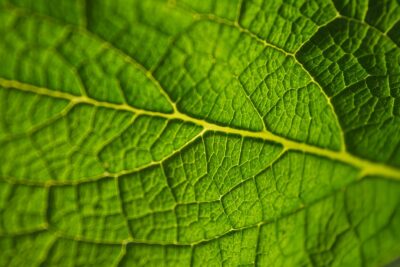
Are Rock Roses Considered Succulent Plants?

Rock roses, also known as Cistus, are a popular choice among gardeners due to their beautiful flowers and low maintenance requirements. These plants are native to the Mediterranean region and are often found growing in rocky, dry, and sandy soils. One question that often arises among plant enthusiasts is whether rock roses can be considered succulent plants.
We will explore the characteristics of rock roses and discuss whether they meet the criteria to be classified as succulents. We will delve into the definition of succulent plants and examine the key features that distinguish them from other plant types. Additionally, we will look at the specific traits of rock roses and analyze if they possess the typical succulent adaptations, such as water storage capacity and drought tolerance. By the end of this article, you will have a better understanding of whether rock roses can be classified as succulent plants.
- Yes, rock roses are considered succulent plants
- Rock roses have thick, fleshy leaves that store water
- They are known for their ability to survive in dry and arid conditions
- Rock roses are drought-tolerant and can withstand long periods without water
- Their succulent nature allows them to thrive in rocky and sandy soils
- Rock roses belong to the family Cistaceae, which includes many succulent species
- These plants have adapted to survive in Mediterranean climates
- Rock roses are popular in xeriscaping and low-water landscaping designs
- They are prized for their colorful flowers and ability to withstand heat and drought
- In summary, rock roses exhibit the typical characteristics of succulent plants
- Frequently Asked Questions
Yes, rock roses are considered succulent plants
Rock roses, also known as Cistus, are indeed classified as succulent plants. Succulents are a diverse group of plants that have adapted to survive in arid conditions by storing water in their leaves, stems, or roots. Rock roses have thick, fleshy leaves that help them retain moisture and thrive in dry environments.
These beautiful flowering plants are native to the Mediterranean region and are well-known for their resilience and low maintenance requirements. They are commonly found in rocky or sandy soils, where their succulent properties allow them to withstand long periods of drought.
Rock roses are highly valued for their vibrant and showy flowers, which come in a range of colors including white, pink, purple, and yellow. Their attractive blooms make them a popular choice for gardeners looking to add a splash of color to their landscapes.
Furthermore, rock roses belong to the family Cistaceae, which includes around 20 different species. Some of the most well-known species include Cistus ladanifer, Cistus monspeliensis, and Cistus salviifolius. Each species has its own unique characteristics, but they all share the common trait of being succulent plants.
 Discover the Snake Plant Lookalike: Which Succulent Resembles it?
Discover the Snake Plant Lookalike: Which Succulent Resembles it?As succulents, rock roses have certain care requirements that are important to ensure their health and vitality. They prefer well-draining soil, as excessive moisture can lead to root rot. It is recommended to water them sparingly, allowing the soil to dry out between waterings. Additionally, they thrive in full sun or partial shade, depending on the specific species.
Rock roses are indeed considered succulent plants due to their ability to store water in their leaves. Their stunning flowers, adaptability to arid conditions, and low maintenance needs make them a great addition to any succulent collection or garden.
Rock roses have thick, fleshy leaves that store water
Rock roses, also known as Cistus, are a group of plants that are often debated when it comes to categorizing them as succulents. Succulent plants are typically characterized by their ability to store water in their thick, fleshy leaves, stems, or roots.
Rock roses possess certain succulent-like characteristics that have led to the confusion. Their leaves are typically small and densely packed, with a waxy or resinous coating that helps reduce water loss. These adaptations allow rock roses to withstand periods of drought and thrive in arid environments.
Thick and fleshy leaves
One of the main reasons why rock roses are sometimes considered succulents is because of their thick, fleshy leaves. These leaves have a unique structure that enables them to retain water efficiently. The thickness of the leaves allows for water storage, ensuring the plant has access to water during dry periods.
In addition to their thickness, rock rose leaves often have a waxy or resinous coating. This coating helps to minimize water loss through evaporation, further enhancing their ability to survive in dry conditions. The waxy layer acts as a barrier, preventing moisture from escaping and protecting the plant from excessive transpiration.
Drought tolerance
Another characteristic that adds to the succulent-like qualities of rock roses is their remarkable ability to withstand drought. These plants have adapted to survive in Mediterranean and other dry climates, where water resources can be limited.
 Is Shrek's Ear Succulent a Real Plant or Just a Myth?
Is Shrek's Ear Succulent a Real Plant or Just a Myth?Rock roses have developed mechanisms to conserve water and minimize moisture loss. Their small leaves and compact growth habit reduce the surface area exposed to the sun, reducing water requirements. The ability to store water in their leaves allows them to endure extended periods without rainfall, making them highly drought-tolerant.
While rock roses exhibit certain traits commonly associated with succulent plants, they are not classified as true succulents. Although they have thick, fleshy leaves that store water and possess adaptations to survive in arid conditions, they belong to a different botanical family.
Rock roses are part of the Cistaceae family, which includes various species. They may share some characteristics with succulents, but they have their own unique features and requirements. Understanding the distinctions between rock roses and succulents can help gardeners make informed decisions when it comes to cultivation and care.
They are known for their ability to survive in dry and arid conditions
Rock roses, also known as Cistus, are plants that are often associated with their ability to thrive in dry and arid conditions. This has led many people to wonder if they are considered succulent plants, as succulents are also known for their ability to store water in their leaves and stems.
While rock roses do have some characteristics that are similar to succulents, they are not typically classified as such. Succulents are a specific group of plants that have evolved to store water in their fleshy leaves or stems, allowing them to survive in extremely dry environments. They are often characterized by their thick, juicy leaves and their ability to withstand long periods of drought.
Rock roses, on the other hand, have adapted to survive in dry conditions through other means. They have small, evergreen leaves that are covered in a waxy coating, which helps to reduce water loss through evaporation. Additionally, their roots are able to grow deep into the soil to access any available moisture.
 Locating Desert Plants: A Guide to Finding Cacti and Succulents Nearby
Locating Desert Plants: A Guide to Finding Cacti and Succulents NearbyAlthough rock roses are not considered succulent plants, they do share some similarities. Like succulents, rock roses are drought-tolerant and can survive in dry conditions. They also have an attractive appearance, with their delicate flowers and silvery-grey foliage.
So, while rock roses may not fit the strict definition of succulent plants, they are certainly an excellent choice for gardeners looking to add some drought-tolerant and resilient plants to their landscape.
Rock roses are drought-tolerant and can withstand long periods without water
Rock roses, also known as Cistus, are a genus of flowering plants that are often praised for their ability to thrive in dry and arid conditions. These plants have adapted to survive in harsh environments and are known for their drought-tolerant nature.
One of the key characteristics of rock roses is their ability to withstand long periods without water. They have developed specialized adaptations that allow them to conserve moisture and survive in arid regions. Their leaves are often covered in a dense layer of fine hairs, which helps to reduce water loss through evaporation. This adaptation, known as pubescence, acts as a protective barrier against excessive transpiration.
In addition to their physical adaptations, rock roses also have a unique root system that aids in their survival. They possess deep, extensive root systems that enable them to access water from deeper soil layers, even in times of drought. This allows them to thrive in arid conditions where other plants may struggle to survive.
It's worth noting that while rock roses are highly drought-tolerant, they are not classified as succulent plants. Succulents are characterized by their ability to store water in their leaves, stems, or roots, which allows them to withstand prolonged periods without water. Rock roses, on the other hand, rely on their specialized adaptations and deep root systems to survive in dry conditions.
 Finding and Cultivating the Elusive Queen of the Night Succulent
Finding and Cultivating the Elusive Queen of the Night SucculentRock roses are often used in xeriscaping and Mediterranean-style gardens, where they can add beauty and color to landscapes while requiring minimal irrigation. Their ability to withstand drought makes them an excellent choice for gardeners looking to conserve water and create sustainable landscapes.
While rock roses share some similarities with succulent plants in terms of their ability to survive in dry conditions, they are not considered succulents. Their adaptations and resilience make them a valuable addition to water-wise gardens and a great choice for gardeners looking for low-maintenance and drought-tolerant plants.
Their succulent nature allows them to thrive in rocky and sandy soils
Rock roses, also known as Cistus, are a group of flowering plants that have gained popularity among garden enthusiasts. One common question that arises when discussing rock roses is whether they can be considered succulent plants. Succulent plants are known for their ability to store water in their leaves, stems, or roots, allowing them to survive in arid conditions.
So, are rock roses considered succulent plants?
While rock roses do share some characteristics with succulents, they are not typically classified as succulent plants. However, their succulent nature allows them to thrive in rocky and sandy soils, which are often poor in nutrients and retain little moisture.
Here are some key features of rock roses:
 Identifying the Succulent: What Type Is It?
Identifying the Succulent: What Type Is It?- Leathery leaves: Rock roses have thick, leathery leaves that help them retain water and withstand drought conditions.
- Woolly or hairy foliage: Some species of rock roses have a woolly or hairy covering on their leaves, which acts as a protective layer against excessive evaporation.
- Drought tolerance: Rock roses are adapted to survive in Mediterranean climates, where they experience long, dry summers. Their ability to tolerate extended periods without water is a testament to their succulent-like qualities.
Despite these similarities, rock roses differ from typical succulent plants in their growth habits and overall appearance. Succulents often have fleshy, swollen stems or leaves that store large amounts of water. In contrast, rock roses have a more shrub-like growth habit with woody stems and branches.
It's important to note that while rock roses are not classified as succulent plants, they are still highly resilient and well-suited to xeriscaping or drought-tolerant gardens. Their ability to thrive in arid conditions makes them a valuable addition to any landscape.
Rock roses may not be considered traditional succulent plants, but their succulent-like characteristics and ability to thrive in dry environments make them a fascinating group of plants to explore and cultivate.
Rock roses belong to the family Cistaceae, which includes many succulent species
Rock roses, also known as Cistus, are a group of flowering plants that belong to the family Cistaceae. This family consists of several genera and species, many of which are considered succulent plants.
Succulent plants are characterized by their ability to store water in their leaves, stems, or roots, enabling them to survive in arid or drought-prone environments. They have adapted to conserve water by developing thick, fleshy tissues that can retain moisture for extended periods.
When it comes to rock roses, some species within the Cistaceae family do exhibit succulent characteristics. These species have leaves that are thick and leathery, allowing them to withstand dry conditions and periods of water scarcity.
 Decoding Succulents' Red Edges: A Comprehensive Analysis
Decoding Succulents' Red Edges: A Comprehensive AnalysisCommon Succulent Rock Roses
There are several rock rose species that are considered succulent plants due to their water-storing abilities. These include:
- Cistus albidus: This succulent rock rose is native to the Mediterranean region and is known for its grey-green leaves and beautiful white or pink flowers.
- Cistus salviifolius: Another succulent species, this rock rose is found in the Mediterranean and boasts aromatic leaves and showy white or pink flowers.
- Cistus monspeliensis: This Mediterranean native has hairy, grey-green leaves and produces vibrant pink flowers. It is also considered a succulent plant.
These succulent rock roses are well-suited to dry and sunny environments, making them popular choices for xeriscaping or water-wise gardening. Their ability to store water allows them to thrive even in regions with limited rainfall.
Not All Rock Roses Are Succulent
While some rock roses fall into the category of succulent plants, it's important to note that not all species within the Cistaceae family exhibit succulent characteristics. Some rock roses have thinner leaves and do not possess the water-storing capabilities typically associated with succulents.
Rock roses, regardless of their succulence, are generally resilient and low-maintenance plants. They are known for their beautiful flowers, which bloom in a variety of colors, and their ability to attract pollinators.
While rock roses encompass a wide range of species, some of them can be considered succulent plants due to their ability to store water in their leaves. These succulent rock roses are sought after for their aesthetic appeal and suitability for xeriscaping.
These plants have adapted to survive in Mediterranean climates
Rock roses, also known as Cistus, are a diverse group of plants that have adapted to survive in Mediterranean climates. These plants are known for their beautiful flowers and their ability to withstand hot and dry conditions. But are rock roses considered succulent plants?
 Can You Identify These Gorgeous Succulents?
Can You Identify These Gorgeous Succulents?The term "succulent" refers to plants that store water in their leaves, stems, or roots to survive in arid environments. While rock roses are not typically classified as succulents, they do possess some characteristics that are similar to succulent plants.
Characteristics of rock roses
Rock roses have evolved to thrive in regions with low rainfall and poor soil conditions. They have developed several adaptations that allow them to survive in these harsh environments:
- Thick and waxy leaves: Rock roses have thick, leathery leaves that are covered in a waxy substance. This coating helps to reduce water loss through evaporation, allowing the plant to retain moisture during dry periods.
- Drought tolerance: These plants have a remarkable ability to tolerate drought. They can survive extended periods without rainfall by going into a state of dormancy and reducing their metabolic activity.
- Deep root system: Rock roses have deep roots that can reach down into the soil to access water sources that are beyond the reach of other plants. This allows them to tap into groundwater reserves and survive during prolonged dry spells.
While rock roses do not have the same water storage capabilities as typical succulents like cacti or agaves, they have adapted to conserve water and thrive in dry conditions.
While rock roses may not be classified as traditional succulent plants, they do exhibit several characteristics that are reminiscent of succulents. Their ability to store and conserve water allows them to survive in Mediterranean climates, making them a great choice for gardeners in similar regions.
Rock roses are popular in xeriscaping and low-water landscaping designs
Rock roses, also known as Cistus, are versatile and resilient plants that are commonly used in xeriscaping and low-water landscaping designs. These plants are native to the Mediterranean region and have gained popularity in various parts of the world due to their ability to thrive in dry and arid conditions.
One question that often arises when discussing rock roses is whether they can be considered succulent plants. Succulents are known for their ability to store water in their leaves, stems, or roots, allowing them to survive in arid environments. While rock roses share some characteristics with succulents, they are not typically classified as such.
 Ultimate Guide: Identifying Succulents and Getting the Help You Need
Ultimate Guide: Identifying Succulents and Getting the Help You NeedCharacteristics of Rock Roses
Rock roses have several notable characteristics that make them well-suited for xeriscaping:
- Drought-tolerant: Rock roses are highly resistant to drought and can survive with minimal water requirements once established.
- Evergreen foliage: These plants feature attractive, leathery leaves that remain green throughout the year, providing year-round interest in the garden.
- Colorful flowers: Rock roses produce an abundance of vibrant, showy flowers in various shades of pink, white, and yellow. These blooms add a splash of color to the landscape.
- Tolerant of poor soil conditions: These plants can adapt to a wide range of soil types, including sandy or rocky soils, making them ideal for challenging landscaping situations.
Despite sharing some similarities with succulents, rock roses do not possess the same water storage capabilities. Succulents typically have thick, fleshy leaves or stems that store water for extended periods, allowing them to survive long periods of drought. In contrast, rock roses rely on their ability to withstand dry conditions rather than storing water.
It is worth noting that some species of rock roses may exhibit limited succulent-like characteristics, such as thicker leaves or a waxy coating that reduces water loss. However, these adaptations are not as pronounced as those found in true succulents.
While rock roses are well-suited for xeriscaping and low-water landscaping due to their drought tolerance, they are not considered true succulent plants. Their ability to survive in arid conditions is attributed to their resilience and adaptability rather than water storage capabilities.
They are prized for their colorful flowers and ability to withstand heat and drought
Rock roses, also known as Cistus, are a popular choice among gardeners for their vibrant flowers and their remarkable ability to thrive in harsh conditions. These Mediterranean natives are known for their resilience and adaptability, making them a perfect choice for those looking to add some color to their garden without compromising on sustainability.
What makes rock roses unique is their succulent-like qualities. While they are not classified as true succulents, they exhibit similar characteristics that make them highly drought-tolerant. Their leaves are leathery and often covered in a waxy substance, which helps to reduce water loss through evaporation.
 Identifying Signs of Growth in Succulent Plants: A Guide
Identifying Signs of Growth in Succulent Plants: A GuideRock roses are well-suited to hot and dry climates. They have evolved to withstand long periods of intense sun exposure and minimal water availability. This makes them an ideal option for xeriscaping, a landscaping technique focused on conserving water and creating low-maintenance gardens.
One of the key reasons why rock roses are considered succulent-like is their water-storing abilities. These plants have the ability to store water in their leaves and stems, which allows them to survive extended periods without rainfall. This adaptation enables them to thrive in nutrient-poor soils and rocky terrains where other plants may struggle to survive.
Rock roses produce stunning flowers in a variety of colors. Their blooms can range from pure white to shades of pink, purple, and even yellow. These flowers are not only visually appealing but also attract pollinators such as bees and butterflies, making them a valuable addition to any garden ecosystem.
While rock roses are not classified as succulent plants, they possess many succulent-like qualities. Their ability to endure hot and dry conditions, their water-storing abilities, and their colorful blooms make them a wonderful choice for gardeners looking to create a resilient and visually stunning landscape.
In summary, rock roses exhibit the typical characteristics of succulent plants
Rock roses, also known as Cistus, are a group of flowering plants that belong to the family Cistaceae. They are native to the Mediterranean region and are known for their beautiful flowers and aromatic foliage. While rock roses may not be commonly recognized as succulent plants, they do exhibit several characteristics that are typical of succulents.
Water-storing capabilities
One of the key features of succulent plants is their ability to store water in their leaves, stems, or roots. This adaptation allows them to survive in arid environments with limited water availability. Similarly, rock roses possess water-storing capabilities, which enable them to withstand drought conditions. Their thick, leathery leaves and hairy stems help to reduce water loss through evaporation.
Tolerance to dry conditions
Succulent plants are renowned for their ability to tolerate extended periods of drought. Rock roses are no exception. These plants have adapted to survive in regions with low rainfall and intense heat. They can withstand dry conditions by going dormant during periods of water scarcity and resuming growth when water becomes available again.
 Discover a Comprehensive PDF Guide with Pictures of Various Succulents
Discover a Comprehensive PDF Guide with Pictures of Various SucculentsDrought-resistant roots
Another characteristic shared between rock roses and succulent plants is the development of drought-resistant roots. Succulents often have extensive root systems that can reach deep into the soil to access moisture. Similarly, rock roses have long taproots that enable them to tap into water sources deep underground, providing them with a steady supply of water during dry spells.
- Thick, leathery leaves
- Hairy stems
- Dormancy during water scarcity
- Resilient taproots
These are just a few of the reasons why rock roses can be considered succulent plants. While they may not possess the same fleshy appearance as other well-known succulents like cacti or jade plants, their adaptations to survive in dry environments align with the characteristics commonly associated with succulents.
So, if you've been wondering whether rock roses fall under the category of succulent plants, the answer is yes! They may not fit the traditional image of a succulent, but their ability to store water, tolerate dry conditions, and develop drought-resistant roots make them a fascinating addition to any succulent collection.
Frequently Asked Questions
1. Are Rock Roses Considered Succulent Plants?
Yes, rock roses (Cistus spp.) are considered succulent plants. They have adaptations that allow them to store water in their leaves and stems, making them drought-tolerant.
2. How often should I water my succulent plants?
Succulent plants generally require less water compared to other plants. Water them thoroughly once every 1-2 weeks, allowing the soil to dry out between waterings.
3. Can I propagate succulents from leaf cuttings?
Yes, many succulents can be propagated from leaf cuttings. Simply remove a healthy leaf and place it on well-draining soil, and new roots and baby plants will form over time.
4. Do succulents need direct sunlight?
Most succulents thrive in bright light, including direct sunlight. However, it's important to acclimate them gradually to prevent sunburn. Some succulents can also tolerate lower light conditions.
If you want to read more articles similar to Are Rock Roses Considered Succulent Plants?, you can visit the Identification category.






You Must Read